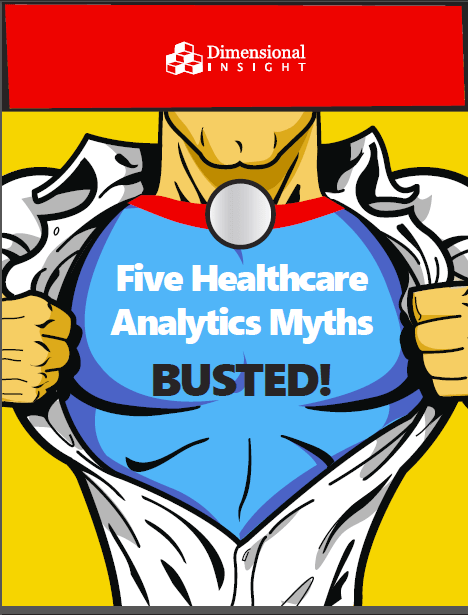Five Healthcare Analytics Myths BUSTED!
Email addresses and contact information are never sold or rented. Your privacy is assured.
Overcome healthcare analytics myths
Picking out a healthcare analytics solution is not your run-of-the-mill Clark Kent kind of job. In fact, it often feels like a job meant for a superhero. You need to jump through hoops to determine your specs and what you need in a solution. But that’s hard to do when you’re faced with your nemeses of Stagnancy and Misinformation.
So how can you combat these evil villains? Fighting Stagnancy requires everyone on your analytics purchasing team to be on the same page, which is a hard task. To do that, you first have to cut through the deceits of Misinformation. In this white paper, we’ll do just that, unmasking Misinformation by busting common healthcare analytics myths.
SAMPLE EXCERPT
Myth number 1: I need a data warehouse before I get started with healthcare analytics.
Have you heard from healthcare technology vendors that you absolutely, positively NEED a data warehouse to do healthcare analytics correctly? Misinformation is all over this myth. It’s just not true. You need analytics to help you reach your goals quickly and efficiently, and a data warehouse just doesn’t reflect the realities of that. Truth is, a data warehouse is a very stationary concept: once in the warehouse, most of the data will change very little. However, some of the most interesting and useful information is that which reflects what’s happening right now. Data is dynamic so why dedicate a warehouse to static information that will decrease in usefulness over time? This is one place where Stagnancy creeps in, leading to a less-than-impressive implementation.
Instead, it’s important to look at analytics solutions that shift the emphasis to:
- Extracting data from its original sources
- Combining and transforming the information
- Determining what’s most useful to your users
- Getting information to users quickly
- Focusing on the aspects of the problem representing the highest value
What’s most important is a continuous and timely flow of information that represents the current state of the organization and its processes, and how that state is changing over time.

